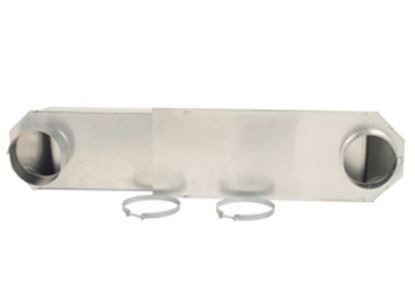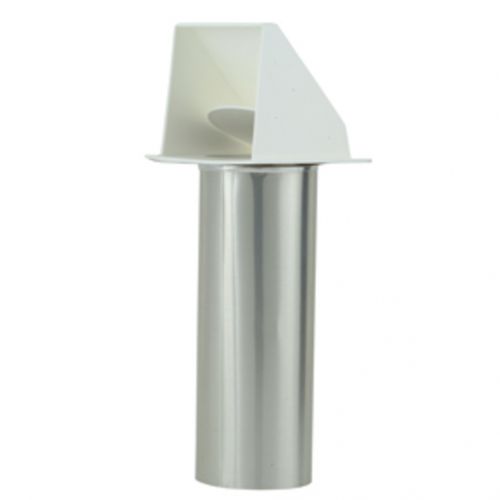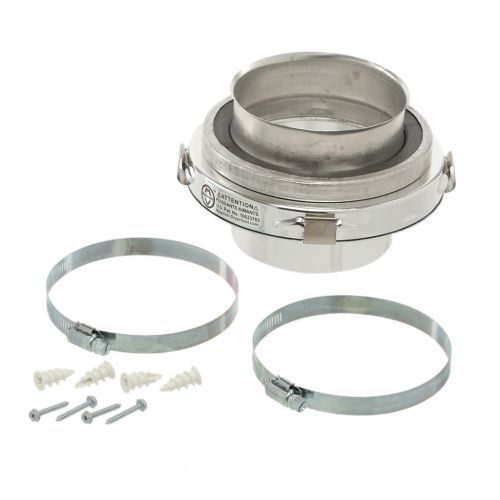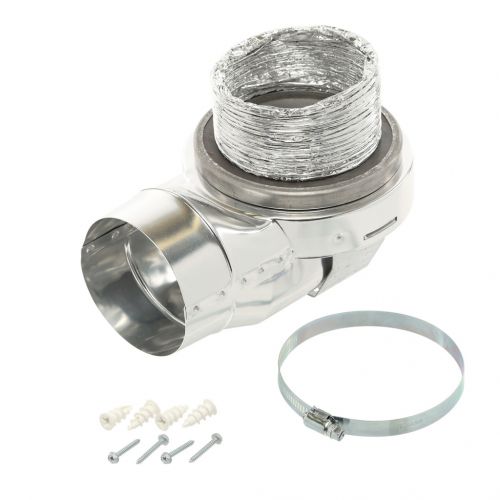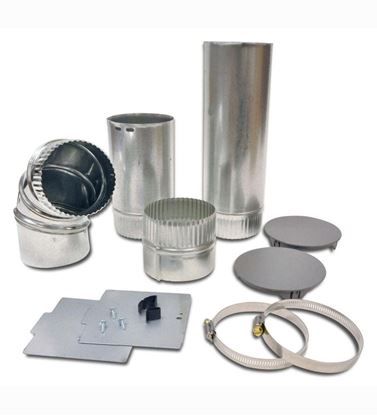
How to Clean a Dryer Vent Yourself?
Maintaining a clean and efficient dryer vent is crucial for the optimal performance and safety of your clothes dryer. Over time, lint, debris, and dust can accumulate in the vent, restricting airflow and increasing the risk of fire hazards. While professional dryer vent cleaning services are available, you can save both time and money by tackling the task yourself.
In this article, we will guide you through the process on how to clean a dryer vent from outside and inside. By following these simple instructions, you can ensure a well-maintained dryer vent and promote the longevity of your appliance while keeping your home safe from potential fire risks. Before we dive in, let us find out what is a dryer vent & how does it work.
What is a Dryer Vent?
A dryer vent is a duct or pipe that allows hot air, moisture, and lint to escape from a clothes dryer to the outside of a building. It serves as a crucial component of the dryer's ventilation system, promoting proper airflow and preventing potential hazards. The vent typically extends from the back of the dryer to an exterior wall or roof, enabling the release of heat and humidity generated during the drying process. Looking for the best place to buy dryer parts from top-selling brands? HnKParts is the one-stop destination for all your dryer parts needs. We stock top-selling brands such as Whirlpool, Maytag, and Frigidaire, so you can be sure you’re getting quality parts at reasonable prices. From belts and thermostats to heating elements and knobs, our inventory has it all.
How does a Dryer Vent work?
A dryer vent operates through a simple yet effective mechanism. As the dryer heats up the air inside, a fan or blower propels the air through the dryer vent duct. This duct is typically made of metal or flexible aluminum and is connected to the dryer and an exterior vent opening. The hot air, along with the moisture, is then pushed outside, allowing fresh air to enter the dryer. This process prevents the buildup of excess heat and moisture, ensuring efficient drying and reducing the risk of fire hazards.
What size is a Dryer Vent?
The size of a dryer vent plays a crucial role in maintaining proper airflow and preventing potential hazards such as lint buildup and dryer fires. The standard size for a dryer vent is 4 inches in diameter. This size is widely used and recommended by manufacturers and industry experts. It provides an adequate airflow capacity to effectively remove the hot air and moisture from the dryer. Most residential dryers are designed to accommodate a 4-inch vent opening.
It's important to note that using the correct size of the dryer vent is crucial for optimal performance and safety. Using a smaller vent size can restrict airflow, leading to longer drying times, reduced efficiency, and potential overheating of the dryer. On the other hand, using a larger vent size may result in decreased airflow velocity, which can also impact drying efficiency.
What Type of Dryer Vent Is Best?
When it comes to choosing the best type of dryer vent, several options are available. Here are some commonly used types:
- Flexible Aluminum Ducts: These are often used in situations where the dryer needs to be positioned in a tight or difficult-to-access space. Flexible aluminum ducts are easy to install and can be bent to fit various configurations. However, they can sag or accumulate lint more easily than rigid ducts, so clean out dryer vent regularly.
- Rigid Metal Ducts: Rigid metal ducts, such as those made from galvanized steel or aluminum, offer excellent durability and airflow performance. They are less prone to lint accumulation and are recommended for longer vent runs. Rigid ducts require careful planning and precise installation to ensure a smooth and efficient airflow path.
- Semi-Rigid Metal Ducts: These ducts combine the flexibility of a flexible duct with the durability of a rigid duct. They are made of a corrugated metal material and offer a good balance between ease of installation and airflow efficiency. Semi-rigid metal ducts are often used in shorter vent runs or when a slight amount of flexibility is needed.
- Dryer Vent Hoses: These hoses are typically made of vinyl or foil and are the least expensive option. However, they are also the least durable and can easily become kinked or crushed, restricting airflow. Dryer vent hoses are generally not recommended for long or complex vent runs.
What Happens When Dryer Vent Is Blocked?
When a dryer vent is blocked, it can lead to several significant problems.
- Firstly, the blocked vent restricts the airflow, causing the dryer to overheat. This overheating can damage the heating element or thermostat, resulting in reduced drying efficiency and potential fire hazards.
- Secondly, the trapped moisture in the blocked vent can create a breeding ground for mold and mildew, leading to unpleasant odors and potential health risks.
- Additionally, the excess heat and moisture can cause damage to surrounding walls and ceilings, requiring costly repairs.
Signs That Your Dryer Vent Needs to Be Cleaned?
We know that dryers are essential appliances in many households, providing a convenient and efficient way to dry laundry. However, it's important to keep in mind that regular maintenance is crucial to ensure their optimal performance and safety. One often overlooked aspect of dryer maintenance is clean out dryer vent. Over time, lint, debris, and even small objects can accumulate in the vent, obstructing airflow and posing a fire hazard. To help you identify when to clean dryer vent, here are some signs to watch out for:
- Longer Drying Times: If you notice that your clothes are taking longer to dry than usual, it may indicate a clogged dryer vent. A restricted airflow caused by lint buildup prevents the hot, moist air from properly escaping the dryer, leading to extended drying cycles.
- Excessive Heat: When a dryer vent is clogged, the trapped hot air has nowhere to go, causing the dryer and its surroundings to become excessively hot. If you find that your laundry room feels unusually warm during operation or notice an intense heat emanating from the dryer, it's a clear indication of a vent blockage.
- Musty Odors: Lint and debris accumulated in the dryer vent can create a breeding ground for mold and mildew. If you detect a musty smell in your laundry room, even after clothes have been freshly dried, it could be a sign that moisture is being trapped in the vent and not properly vented outside.
- Excessive Lint: While it's normal to find some lint in the dryer's lint trap after each use, an unusually large amount of lint collecting in the trap or around the dryer is an indication of a clogged vent. This excessive lint buildup occurs when lint bypasses the trap due to a restricted airflow.
- Hot Exterior: Run your hand along the outside of your dryer. If you feel excessive heat on the exterior, it suggests that the vent is not effectively expelling the hot air. This overheating can damage the dryer's components and increase the risk of a fire.
- Burning Smell: A burning smell emanating from your dryer or laundry room should never be ignored. It could be a sign of lint igniting within the vent due to poor airflow. Shut off the dryer immediately, unplug it, and have the vent inspected and cleaned.
- Backdrafts or Birds Nesting: In some cases, debris or even small animals like birds can find their way into the dryer vent, causing obstructions. If you notice birds or other critters near the vent outlet, or if you experience backdrafts of dryer exhaust, it's essential to have the vent inspected and cleared.
How to Clean Dryer Vent from Inside?
Dryer duct cleaning from inside is an essential maintenance task that helps prevent fire hazards and ensures the efficient operation of your dryer. Here are the steps to clean out dryer vent from the inside:
- Gather a dryer vent cleaning kit: A dryer vent cleaning kit is a set of tools designed to remove lint and debris from the dryer vent system, preventing blockages and improving the efficiency and safety of the appliance. Some common dryer vent cleaning tools include a lint brush, flexible cleaning rods, a vacuum cleaner, a vent brush, and a lint trap cleaning tool.
- Disconnect the dryer: Before starting the cleaning process, make sure the dryer is unplugged from the power source. This precaution is crucial to prevent accidents or injuries.
- Locate the vent connection: Move your dryer away from the wall and locate the vent connection. The vent is typically a flexible or rigid metal tube that connects the back of the dryer to the exterior vent opening.
- Disconnect the vent from the dryer: Depending on the type of vent, you may need to loosen a clamp or unscrew the fasteners to disconnect it from the dryer. Carefully remove the vent from the back of the dryer, ensuring not to damage any electrical or gas connections.
- Clean the vent with a vacuum or brush: Use a vacuum cleaner with a long, flexible hose attachment or a specialized dryer vent cleaning brush to remove the lint and debris from inside the vent. Start by inserting the brush or hose into the vent opening and gently push it through the entire length of the vent. Move the brush or hose back and forth to dislodge any buildup. Alternatively, you can use a vacuum cleaner to suction out the debris from the vent.
- Check for blockages: After clean out dryer vent, inspect the opening on the back of the dryer and ensure it is free of lint or obstructions. Use the vacuum or brush to clean any remaining debris from the dryer's vent connection.
- Reconnect the vent: Once the vent and dryer are clean, carefully reattach the vent to the back of the dryer. Ensure it is securely fastened using clamps or screws, depending on the type of vent. Make sure there are no kinks or bends in the vent that could restrict the airflow.
- Clean the exterior vent opening: Go outside and locate the vent opening on the exterior of your home. Remove any visible lint or debris from the vent cover using your hand or a brush. This step ensures proper airflow and prevents blockages.
- Test the dryer: Plug in the dryer and turn it on to test its functionality. Check if the airflow is improved and the dryer is operating smoothly. If you notice any issues, double-check the vent connections and repeat the cleaning process if necessary.
- Establish a regular cleaning schedule: To maintain optimal performance and safety, it's recommended to clean the dryer vent from the inside at least once a year or more frequently if you use the dryer extensively. Set a reminder to ensure this maintenance task is not overlooked. Dryer vent cleaners specialize in removing lint and debris from dryer vents, ensuring proper airflow and reducing the risk of fire hazards. They offer professional services to improve the efficiency and safety of your dryer, preventing potential damage and prolonging its lifespan.
How to Clean Dryer Vent from Outside?
While many people are familiar with cleaning the lint trap inside the dryer, it is equally important to clean the dryer vent from the outside. Cleaning dryer vent from outside is a relatively simple process that can be done with a few basic tools. Here's a step-by-step guide on how to clean your dryer vent from the outside.
- Safety First: Before starting any maintenance task, make sure to unplug the dryer from the power source. This will prevent any accidental injury or damage during the cleaning process.
- Locate the Dryer Vent Outlet: Go outside your home and find the vent opening where the dryer expels air. It is usually located on an exterior wall or on the roof. Look for a small flap or a metal grille covering the vent.
- Remove the Vent Cover: Depending on the type of vent cover, you may need a screwdriver or simply your hands to remove it. Unscrew any screws holding the cover in place, or gently pull it off if it's held by clips or hooks.
- Inspect the Vent Opening: Once the vent cover is removed, take a moment to inspect the vent opening for any visible debris or blockages. Remove any large accumulations of lint or debris using your hands or a small brush.
- Use a Vacuum Cleaner: Attach the narrowest nozzle attachment to your vacuum cleaner. Insert the nozzle into the vent opening as far as possible, and use the vacuum to suction out the lint and debris. Move the nozzle back and forth to cover the entire length of the vent.
- Clean the Vent Cover: While you have the vent cover off, take the opportunity to clean it thoroughly. Use a soft brush or a damp cloth to remove any lint or dirt that has accumulated on the cover. Make sure it is completely dry before reattaching it.
- Reattach the Vent Cover: Once the vent and cover are clean, carefully reattach the vent cover to the exterior wall or roof. Ensure that it is securely in place and properly aligned to prevent any gaps or air leaks.
- Final Checks: Before plugging the dryer back in and using it, double-check that the vent cover is securely attached and functioning correctly. Inspect the area around the vent opening inside your home to ensure it is clean and free of any lint or debris.
How Much Does It Cost to Clean Dryer Vent?
When it comes to cleaning dryer vents, the cost can vary depending on the specific service required.
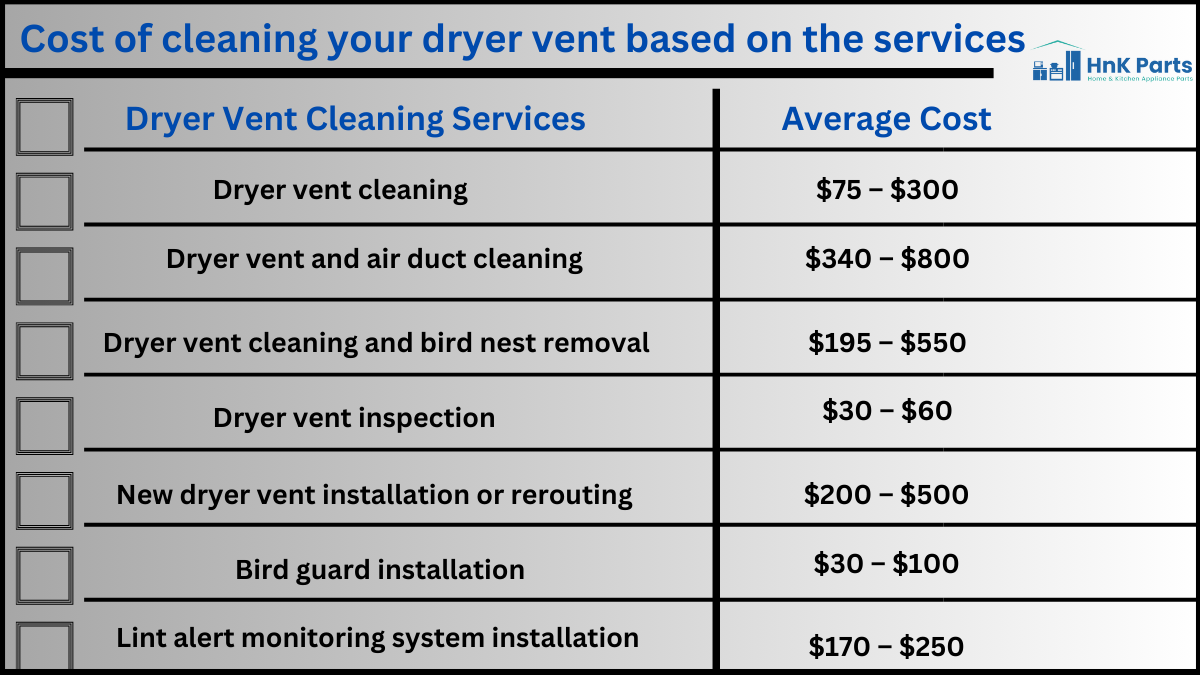
A basic dryer vent cleaning typically ranges from $75 to $300. If you also need air duct cleaning along with the dryer vent, the cost can be higher, averaging between $340 and $800. For cleaning and removing bird nests from the vent, expect to pay around $195 to $550. A dryer vent inspection alone usually costs between $30 and $60. In cases where a new dryer vent installation or rerouting is necessary, the average cost ranges from $200 to $500. For additional features such as bird guard installation, prices range from $30 to $100. Lastly, if you're interested in a lint alert monitoring system installation, expect to pay around $170 to $250.
How Often to Clean Dryer Vent?
Cleaning the dryer vent is an essential task that often gets overlooked. Ideally, the dryer vent should be cleaned at least twice a year to maintain optimal performance and safety. However, the frequency may vary depending on various factors. If you use your dryer frequently or notice signs of poor airflow, such as longer drying times or excessive lint buildup, it is recommended to clean the vent more frequently. Additionally, if you have a long vent line or live in an area with high humidity, regular cleaning is even more crucial. By keeping your dryer vent clean, you can prevent fire hazards and ensure efficient operation of your dryer.
Regular maintenance and cleaning of your dryer vent, both inside and outside, are crucial for the safe and efficient operation of your dryer. By following the step-by-step instructions provided in this article, you can ensure that your dryer vent remains free from lint buildup and other debris. Cleaning the dryer vent not only improves drying performance but also reduces the risk of fire hazards. Remember, a clean dryer vent is essential for both the longevity of your dryer and the safety of your home.


